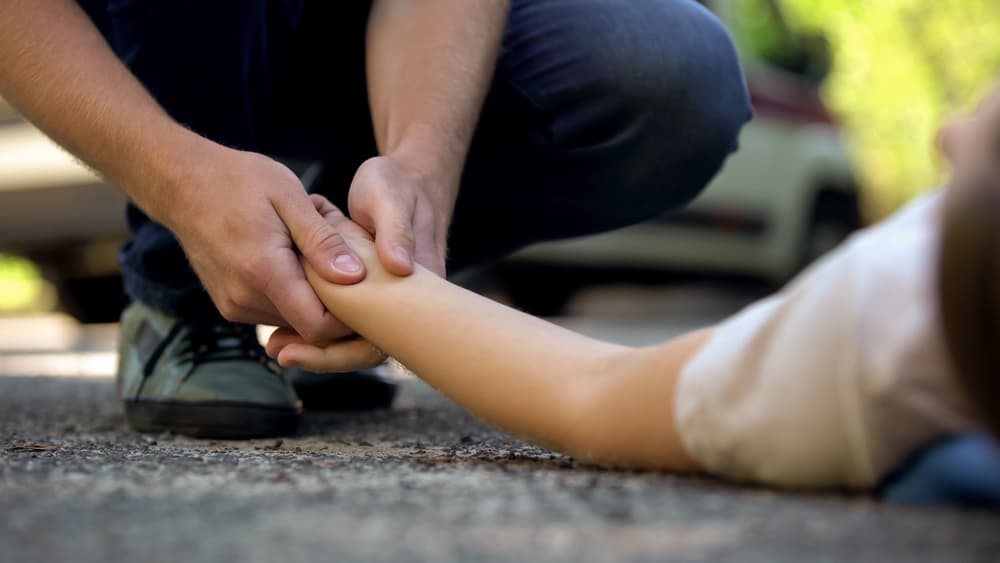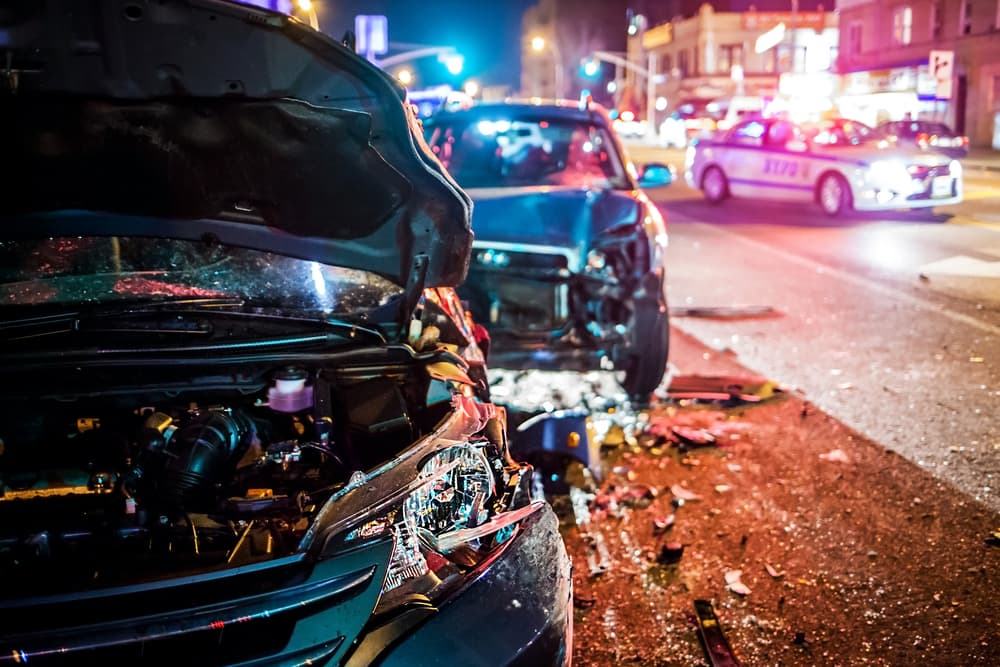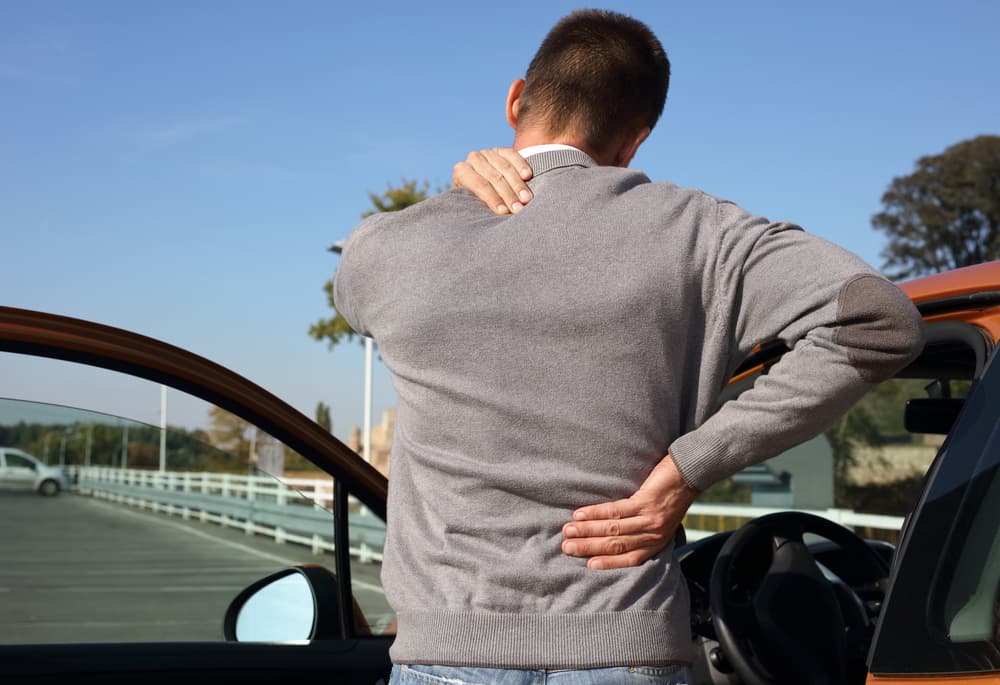In many pedestrian accidents, insurance companies will try to pin some or all of the blame on the injured pedestrian. They may argue that the pedestrian somehow caused or contributed to their accident, such as by being in a traffic intersection at the wrong time. However, in reality, these accidents typically result from negligent driving, reckless driving, intoxicated driving, distracted driving, or other driver errors.
If you sustained injuries in a recent pedestrian collision, you should consult a knowledgeable pedestrian accident lawyer in your area right away. Your attorney can fight any insurance company liability disputes, discuss your options, take the appropriate steps on your behalf, and pursue the compensation you need for your pedestrian accident injuries.
How do Negligent Drivers Cause Pedestrian Accidents in South Carolina?
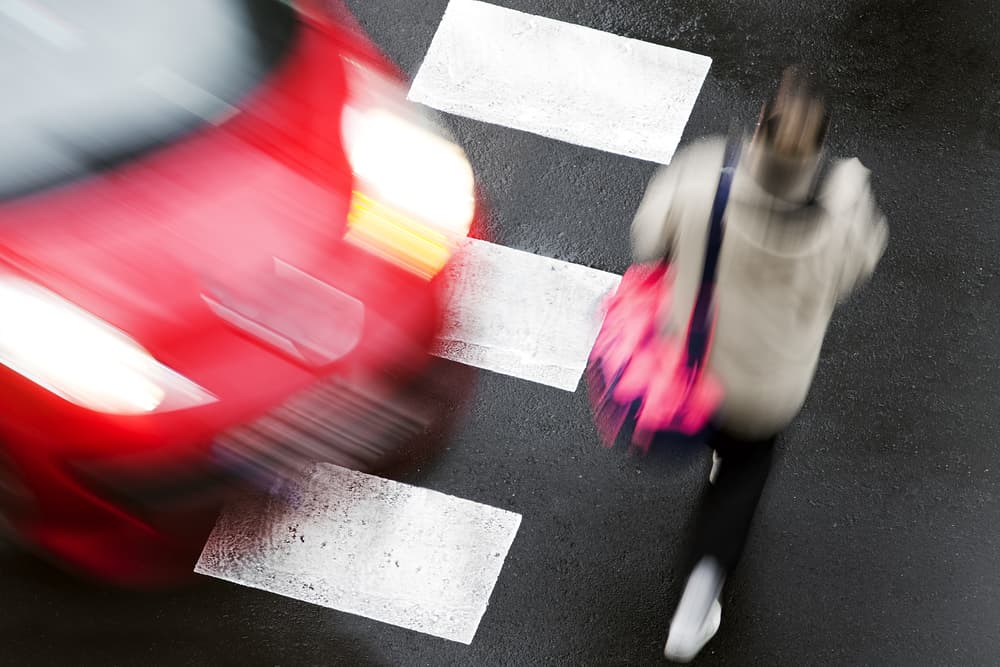
Negligent drivers contribute significantly to pedestrian accidents through various actions, such as speeding, distracted driving, failing to yield, and disregarding traffic signals. These behaviors create hazardous conditions for pedestrians, increasing the likelihood of accidents and injuries.
- Speeding is a common form of negligence among drivers, especially in urban areas where pedestrian traffic is high. When drivers exceed the speed limit, they have less time to react to unexpected situations, such as pedestrians crossing the street. Additionally, the force of impact increases with speed, leading to more severe injuries or fatalities in the event of a collision.
- Distracted driving is another common cause of local pedestrian accidents. Drivers who engage in activities like texting, talking on the phone, or adjusting the radio are less attentive to their surroundings – including pedestrians crossing the road. This reduced awareness can result in delayed reactions or failure to see pedestrians until it’s too late to avoid a collision.
- Failing to yield to pedestrians at crosswalks or traffic intersections is another significant contributing factor to accidents. Some drivers may disregard pedestrian right-of-way laws, either out of ignorance or impatience, putting pedestrians at risk. This disregard for traffic regulations increases the likelihood of accidents, particularly in areas with heavy pedestrian traffic, such as downtown areas or near schools.
- Ignoring traffic signals, such as running red lights or stop signs, is another form of negligence that can lead to pedestrian accidents. When drivers ignore traffic signals, they create confusion and uncertainty for pedestrians, who may assume it’s safe to cross the street. This can result in collisions between pedestrians and vehicles, causing serious injuries or fatalities.
Pedestrian accidents are most likely to occur in urban areas with high levels of pedestrian activity, such as city centers, residential neighborhoods, and commercial districts. Intersections, crosswalks, and areas near public transportation hubs are particularly high-risk locations due to the convergence of pedestrian and vehicular traffic.
What are the Most Common Injuries in Pedestrian Accidents?
Pedestrian accidents that result from driver negligence can lead to a variety of injuries, ranging from minor cuts and bruises to severe trauma and fatalities. Some of the most common injuries that pedestrians may suffer in an accident include:
- Soft tissue injuries – These injuries include bruises, strains, and sprains, often resulting from the force of the collision or being thrown to the ground. While soft tissue injuries are generally less severe than some other injuries, they can still cause pain and discomfort for pedestrians.
- Fractures and broken bones – The force of being struck by a vehicle can cause bones to fracture or break, leading to significant pain, immobility, and the need for medical treatment, such as casting or surgery.
- Head or brain injuries – Pedestrians are at risk of sustaining serious head injuries, including concussions, skull fractures, and traumatic brain injuries (TBIs), if their head strikes the vehicle, pavement, or other objects during the accident. Head injuries can also have long-lasting effects on cognitive function, behavior, and overall quality of life.
- Spinal cord injuries – In severe pedestrian accidents, the spine can be injured, resulting in partial or complete paralysis, loss of sensation, and other neurological impairments. Spinal cord injuries often require extensive medical treatment and rehabilitation to regain functionality.
- Internal injuries – Pedestrians may also suffer internal injuries, such as organ damage or internal bleeding, due to the force of a collision. These injuries may not be immediately apparent but can lead to serious complications if left untreated.
- Emotional trauma and mental anguish – Pedestrian accidents can also cause emotional distress and psychological trauma for survivors, including symptoms of anxiety, depression, post-traumatic stress disorder (PTSD), and phobias related to walking or crossing the street.
How to Prove Driver Negligence in Pedestrian Accident Cases
Proving driver negligence in a pedestrian accident case requires demonstrating that the driver breached their legal duty of care, directly causing harm to the pedestrian. Several elements must be established to prove negligence, along with gathering helpful evidence to support the claim:
- The first legal element to establish is duty of care. This means showing that the driver had a legal obligation to exercise reasonable care while operating their vehicle, including obeying traffic laws and being attentive to pedestrians.
- The second element is breach of duty, which involves demonstrating that the driver failed to uphold their legal duty of care. This can be established by showing actions such as speeding, distracted driving, failure to yield, running red lights or stop signs, or any other behavior that deviates from the expected standard of care.
- The third element is causation, which requires proving that the driver’s breach of duty directly caused the pedestrian’s injuries. This can be challenging but is crucial in establishing liability. It involves showing that the pedestrian’s injuries would not have occurred if not for the driver’s negligent actions or inactions.
- Lastly, the fourth element is damages, which involves demonstrating the extent of the pedestrian’s injuries and resulting damages, including medical expenses, lost income, pain and suffering, and other losses.
Helpful evidence in proving driver negligence in a pedestrian accident case includes:
- Testimony from Eyewitnesses – Statements from witnesses who observed the accident can provide valuable insight into what happened and who was responsible. Eyewitness testimony can also help to corroborate the pedestrian’s account of the events.
- Surveillance camera footage – Video recordings from nearby surveillance cameras or traffic cameras can provide visual evidence of the accident, including the actions of the driver leading up to the collision.
- Accident reconstruction – Experts can reconstruct the accident scene using physical evidence, such as skid marks, vehicle damage, and the positioning of vehicles and pedestrians. Accident reconstruction can help determine factors such as vehicle speed, point of impact, and the sequence of events leading up to the pedestrian accident.
- Cell phone records – If distracted driving likely occurred, obtaining the driver’s cell phone records can provide evidence of phone use, such as calls, texts, or app usage, at the time of the accident.
- Police reports – Official police reports document the details of the pedestrian accident, including statements from involved parties, observations by responding officers, and any citations which officers issued to the driver.
By gathering and presenting this evidence, along with establishing the required elements of proof, it is possible to successfully demonstrate that a driver was negligent in causing a pedestrian accident. This evidence is crucial when it comes to pursuing compensation for the pedestrian’s injuries and holding the negligent driver accountable for their actions.
Recovering Favorable Compensation in a SC Pedestrian Accident Claim or Lawsuit
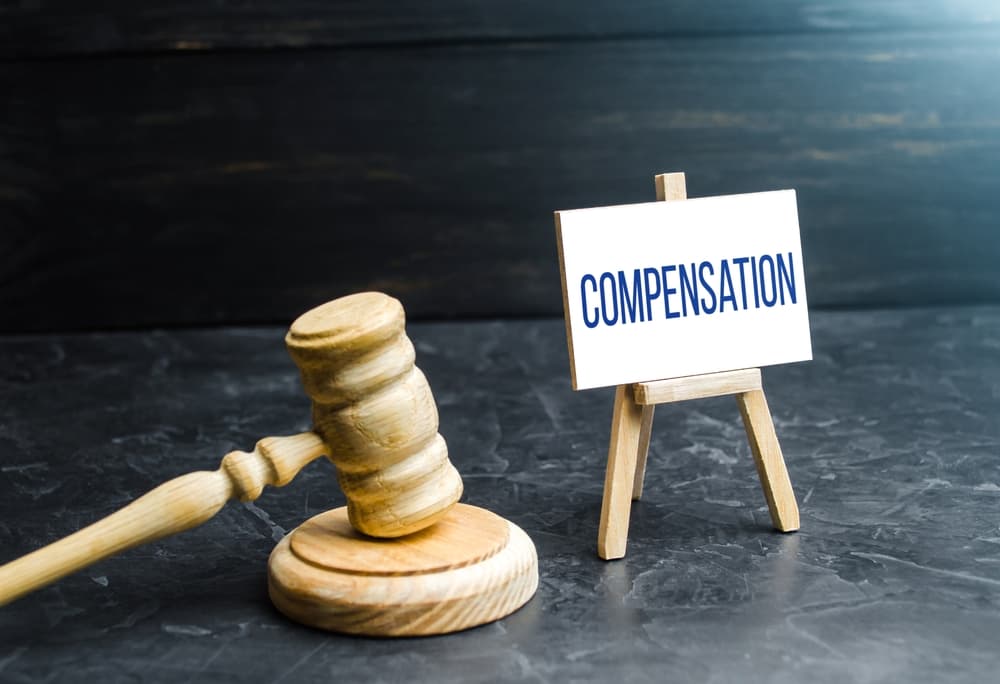
Pedestrian accident victims who have suffered an injury due to a driver’s negligence may be entitled to various types of compensation to cover their losses. These types of compensation can help the victim recover physically, emotionally, and financially from the effects of the accident. Some common types of compensation include:
- Medical expenses – Pedestrian accident victims can seek compensation for medical expenses related to their injuries, including hospital bills, surgery costs, doctor’s visits, physical therapy, medication, and any other necessary medical care. This compensation aims to ensure that the victim receives the treatment they need to recover fully from their injuries.
- Lost income – If the pedestrian is unable to work due to their injuries, they may be entitled to compensation for lost income. This includes both past and future lost earnings resulting from missed work time (due to the accident and recovery process). Additionally, if the injuries result in long-term disability or diminished earning capacity, the victim may receive compensation for future lost earnings.
- Pain and suffering – Pedestrian accident victims may also be awarded compensation for the physical pain and emotional anguish they have endured as a direct result of their injuries. This type of compensation is intended to provide relief for the physical discomfort, mental anguish, and emotional distress due to the accident and its aftermath.
- Disfigurement and disability – If the pedestrian sustains permanent disfigurement or disability due to their accident, they may be entitled to compensation for the lasting physical and emotional effects. This compensation can help cover the costs of ongoing medical care, rehabilitation, assistive devices, and other accommodations necessary to maintain the victim’s quality of life.
- Loss of consortium – In cases where the pedestrian’s injuries have a significant effect on their relationships with family members, spouses, or partners, they may be entitled to compensation for loss of consortium. This type of compensation aims to address the negative effects that the injuries have had on the victim’s ability to enjoy the companionship, affection, and support of their loved ones.
- Punitive damages – In some cases involving particularly reckless or egregious behavior on the part of a driver, the court may award punitive damages to punish the driver and deter similar misconduct in the future.
By seeking compensation for these various types of damages, pedestrian accident victims can work towards rebuilding their lives and moving forward after a traumatic experience. Compensation can provide financial stability, access to necessary medical care, and a sense of justice for the harm resulting from the driver’s negligence.
When to Litigate a Pedestrian Accident Case in the State Court System
Deciding when to litigate a pedestrian accident case involves considering various factors, including the severity of the victim’s injuries, the extent of their damages, liability issues, and the likelihood of reaching a fair settlement through negotiation. Litigation should be considered when settlement negotiations fail to bring about a favorable outcome – or when the at-fault party disputes liability or the extent of damages. Here are some factors to consider when deciding whether to litigate a pedestrian accident case:
- The severity of the victim’s injuries – If the pedestrian sustained severe injuries that require extensive medical treatment, rehabilitation, and ongoing care, litigation may be necessary to ensure adequate compensation to cover these expenses. Serious injuries such as traumatic brain injuries, spinal cord injuries, or permanent disabilities may warrant pursuing litigation to secure the financial resources needed for long-term recovery.
- Disputed liability – If there is a dispute over who was at fault for the pedestrian accident, litigation may be necessary to establish liability and hold the responsible party accountable. This is especially common in cases where the driver denies negligence or claims that the pedestrian contributed to the accident.
- Unfair settlement offers – If the insurance company offers a settlement that does not fully compensate the pedestrian for their injuries and damages, litigation may be necessary to pursue a more favorable outcome. Litigation allows the pedestrian to present their case to a judge or jury and seek fair compensation for their losses.
Once the decision to litigate has been made, there are several types of litigation options that may be available to injured pedestrians:
- Personal injury lawsuit – A pedestrian injured in an accident can file a personal injury lawsuit against the at-fault driver seeking compensation for their injuries, damages, and losses.
- Negligence claim – Pedestrian accident cases are often based on the legal theory of negligence, which requires proving that the driver breached their duty of care, causing harm to the pedestrian. A negligence claim seeks to hold the driver accountable for their careless or reckless actions.
- Wrongful death lawsuit – In cases where a pedestrian is killed as a direct result of the accident, surviving family members may pursue a wrongful death lawsuit against the at-fault driver, seeking compensation for their loss of companionship, financial support, and funeral expenses.
Contact an Experienced South Carolina Pedestrian Accident Lawyer Today
If you sustained injuries in a recent pedestrian collision, you should consult a skilled personal injury attorney in your jurisdiction right away. Your lawyer can thoroughly investigate the circumstances surrounding your accident, determine your options, and pursue the compensation you need for your injuries.
